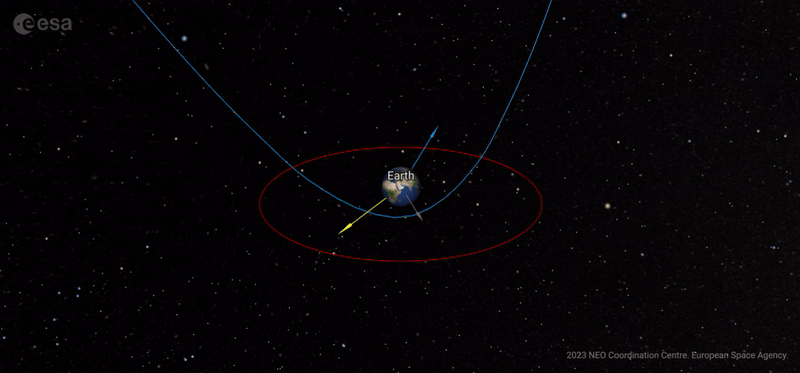An asteroid is set to fly within 2,200 miles of Earth today, narrowly missing our planet, NASA says.
The asteroid, dubbed “2023 BU,” is expected to make its closest approach to Earth at 4:27 p.m. PST when it flies over the southern tip of South America, according(Opens in a new window) to NASA’s Jet Propulsion Laboratory, which also tracks near-Earth asteroids.
2023 BU is on a path that will bring it closer to Earth than orbiting geosynchronous satellites, which travel about 22,000 miles from the planet. (Meanwhile, Starlink satellites travel at about 340 miles in altitude.)

The close flyby may cause worries about 2023 BU slamming into our planet. But NASA says don’t worry; the asteroid measures only about 11.5 to 28 feet across. This means it’s small enough that it should burn up in Earth’s atmosphere if it ends up on a direct path to our planet.
In contrast, NASA says(Opens in a new window) asteroids that measure at least one to two kilometers in size can pose a serious threat to our planet. Even larger asteroids have enough mass and speed to potentially destroy human civilization and kill all life on the planet.
The red line is 2023 BU’s trajectory. The green line represents the orbits of geosynchronous satellites around our planet.
(Credit: NASA JPL)
Amateur astronomer Gennadiy Borisov discovered 2023 BU only this past Saturday. Since then, observatories have been tracking the space rock’s predicted trajectory, which has been confirmed to be a near miss.
“In fact, this is one of the closest approaches by a known near-Earth object ever recorded,” said Davide Farnocchia, a navigation engineer at NASA’s JPL facility. The asteroid will also fly close enough that Earth’s gravitational pull is expected to alter 2023 BU’s orbit around the Sun.
Recommended by Our Editors
“After its encounter, the asteroid’s orbit will be more elongated, moving it out to about halfway between Earth’s and Mars’ orbits at its farthest point from the Sun,” NASA added.
2023 BU is but one of the many near-Earth asteroids NASA and astronomers have been tracking. Users can find a running catalog(Opens in a new window) of them at NASA’s JPL website.
Get Our Best Stories!
Sign up for What’s New Now to get our top stories delivered to your inbox every morning.
This newsletter may contain advertising, deals, or affiliate links. Subscribing to a newsletter indicates your consent to our Terms of Use and Privacy Policy. You may unsubscribe from the newsletters at any time.
Hits: 0














